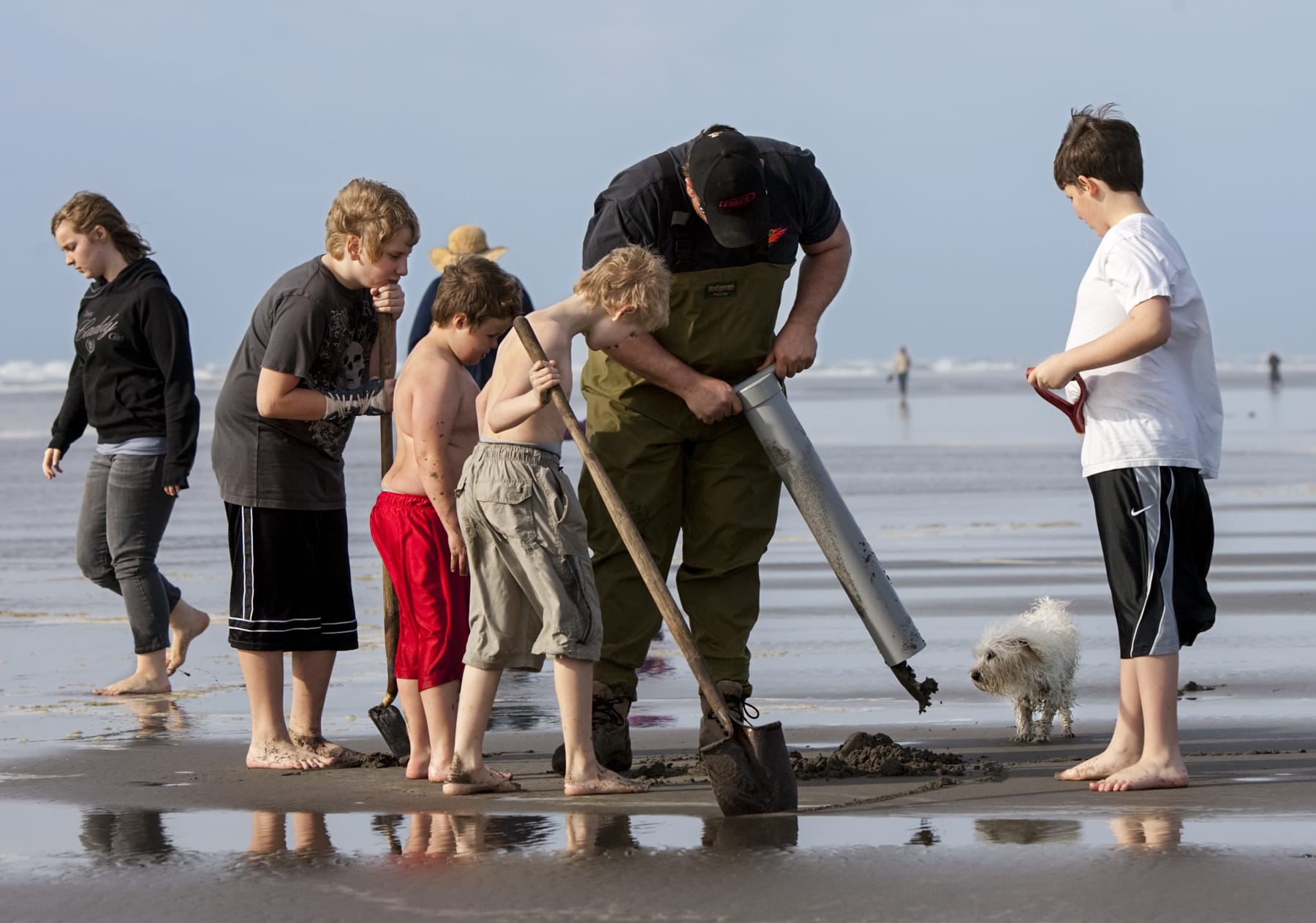The coastal razor clam season this past winter and spring got off to a late start, but it turned into a memorable one for more than 300,000 diggers who turned out to seek the highly sought shellfish.
“Long Beach was one of the stars this past season, and at other beaches (Copalis and Mocrocks) it was a little more constrained as far as digging opportunities go,” said Dan Ayres, the head state Fish and Wildlife coastal shellfish manager. “I am pleased as punch with how the season turned out despite the late start.
“We are certainly grateful for how this past season turned out as we could very well have had no season at all if marine toxins stayed above the action cutoff level. Given what could have happened, all three beaches ended up having great digging.”
His reference comes after the entire coast was closed in late May of 2015 when domoic acid – a natural marine toxin produced by certain types of marine algae that can be harmful or even fatal if consumed in sufficient quantities – spiked well above the 20 parts-per-million cutoff level.



